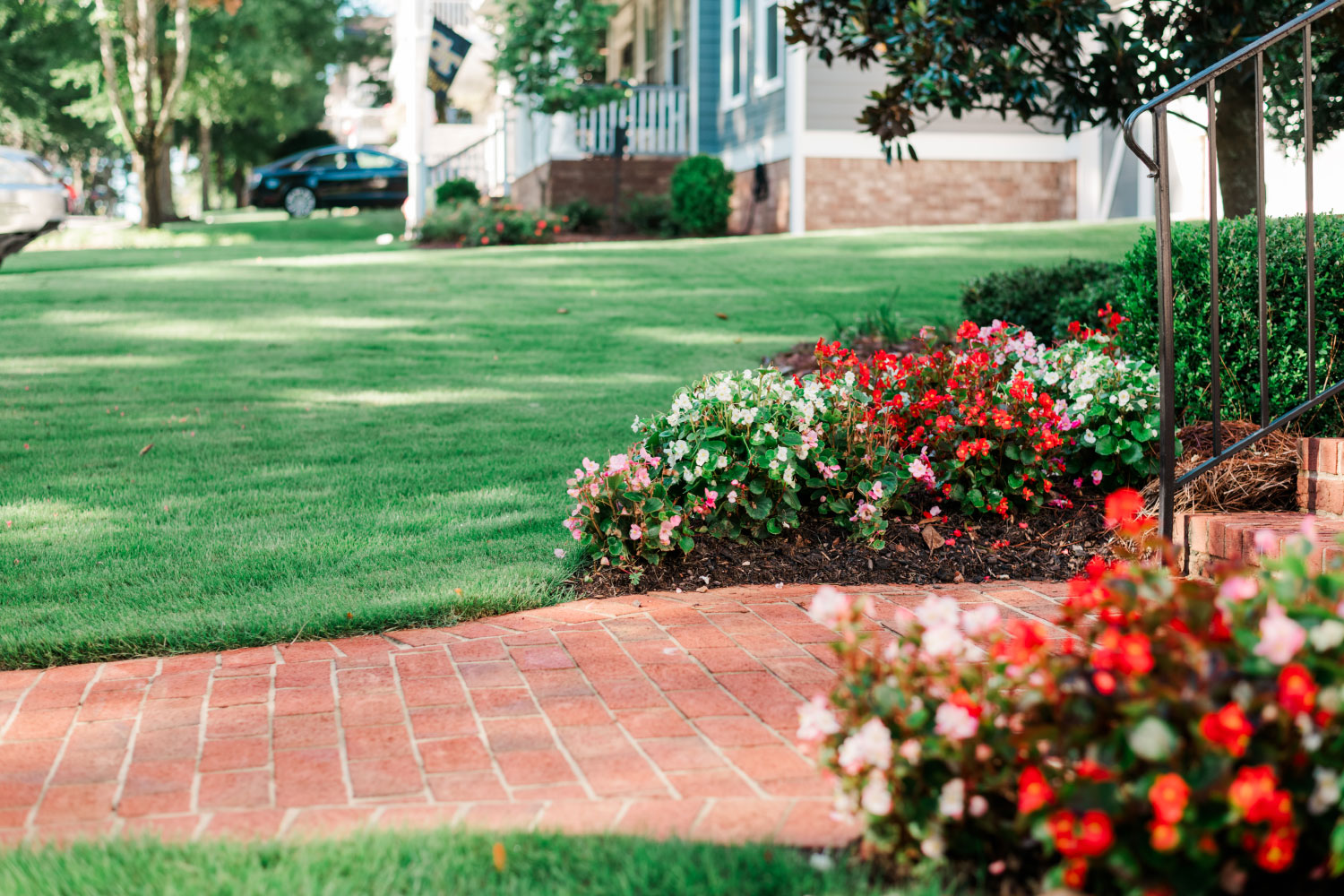Cool mornings are sweet relief after a hot summer. Walking outside to brisk air reminds us that some of the stressors our lawns experience in the summer will soon be replaced with cool nights, falling leaves, and continued football. While these cooler temps and shorter days mean relief in some ways, there are new challenges your grass will face.
Why Your Grass Might Not Be As Green
In metro Atlanta, we mostly grow warm-season grasses like the many varieties of Zoysia and Bermuda. When conditions are ideal, along with the proper fertility, water, and maintenance strategies, they rapidly produce green-top growth to harvest energy from the sun. As days get shorter, the opportunity for light absorption decreases. This causes our turf to naturally shift focus to storage as a stress response.
Therefore, our grass may not appear as green as it did several weeks prior. Uneven color directly related to uneven growth after a cut is normal. Recovery from damages related to disease, mechanical wear, and other natural factors also may make your grass look less green. However, our team tailors our fall fertility to feed your lawn potassium for root health and winter hardiness to sustain green color as long as possible while your turf naturally changes.
Other Factors that Influence The Color of Your Grass
If your concern arises from comparing your neighbor’s property, rest assured that color changes are normal in most cases. Micro-climates, even within your own yard, can mean differences in turf density and color. The grass under a tree, for instance, isn’t as dense as the turf in direct sunlight in your front yard. Different turf species, soil structure, maintenance strategies, water retention, duration, and direction of sunlight are just a few variables that can affect the greenness of your grass compared to your neighbor.
As time continues more deeply into fall, days will get shorter, and soil temperatures will continue to decrease with air temperatures. This also means top growth will continue to slow until we reach our first hard frost, generally around the second week of November. Openly exposed areas may go completely dormant quickly. Other areas closer to structures may stay moderately active with a little green tissue. All of this is to be expected and means winter maintenance strategies, like leaf clearing and soil amendments, become the focus.
Conclusion
In summary, the fall transition is an entirely normal process. The better we can prepare our turf for dormancy, the healthier they will be through winter.
While comparing the green color to other yards is easy, keep in mind transition periods magnify the unique traits present in each microclimate, whether in different portions of your yard or another. Nature’s Turf is here to encourage plant health in all phases, whether mid-growing-season, in transition, or dormancy.








